The post What is Deep Learning appeared first on AI, ML and IoT application development company | Fusion Informatics.
]]>Although cannot match the exact ability of the human brain, Deep Learning allows systems to collect data in clusters and make predictions with superb accuracy.
Deep Learning facilitates various AI (Artificial intelligence) applications, AI services & solutions, and enhances automation capability without any human intervention, it incredibly performs physical and analytical tasks with the highest accuracy.
For example, digital products & services like digital chatbots/virtual assistants, credit card fraud detection systems, voice-controlled TV remotes, and emerging technologies like self-driving cars, all are seamlessly backed by Deep Learning capabilities.
Deep Learning technology is essentially a neural network that has three or more layers. These neural networks simulate human brain behavior and try to learn from large amounts of data extracted.
In neural networks (with three or even more layers), a single layer can still make predictions that are approximately correct while additional layers help to optimize as well as refine for accuracy.
Deep Learning – How Does it Work?
Several layers of neural networks are a set of algorithms that mimic human brains driving Deep Learning technology. Deep Learning is powered by these algorithms that are modeled like human brains, or the way they (human brains) work! What configures the neural network? Training with enormous data configures the neurons present in the very network.
This allows the consequent Deep Learning model to adequately train to process new data. Deep Learning models accept data/information from varied data sources and then analyze them in real-time without any human intervention.
Deep Learning allows optimization of GPUs (Graphics Processing Units) for training models and prepares them to process multiple computations at a time/simultaneously.
Many AI applications are backed by Deep Learning to improve automation tasks and various analytical tasks. When you browse the internet, when you use mobile phones and other AI-ML-enabled electronic devices, you automatically interact with Deep Learning technology.
Other myriad AI-ML-Deep Learning applications include generating captions for YouTube videos, voice commands, speech recognition on smart speakers/smartphones, self-driving cars, facial recognition, and so on.
Deep Delve into Deep Learning Neural Networks
Also called Artificial Neural Networks, Deep Learning Neural networks emulate the human brain through a fine combination of Data Inputs (X), Weights (W), and Bias (B) – the learnable parameters within neural networks.
These elements (X, W, B) collaborate to work together towards accurately recognizing, classifying, and describing objects within the present data.
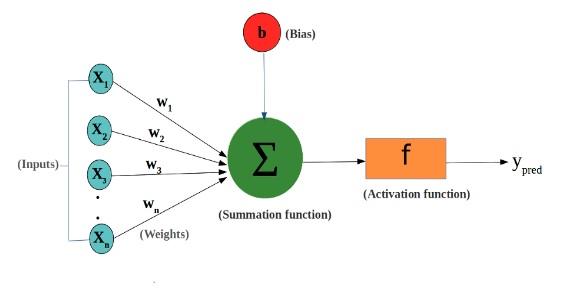
Simplest Types
- Forward Propagation
- Backward Propagation
Deep Learning Neural Networks are composed of several layers of nodes that are interconnected, and each of them is built upon the previous layer to optimize and refine the categorization or the predictions. This is how the computations progress through the network and is called Forward Propagation.
The two layers of the Deep Neural Network, input, and output layers, are called Visible Layers. In the input layer, the Deep Learning model ingests data to process while in the output layer, the final classification or the final prediction is made.
Backward Propagation is another method or process that uses gradient descent kind of algorithms, for calculating errors in predictions, and then adjusting the function’s weights & biases by moving backward through the network layers, in an attempt to train the very model.
Both the processes, Forward Propagation and Backward Propagation make it possible for a neural network to make predictions, to correct errors if any. Gradually the Deep Learning algorithm adjusts, fits itself, and becomes more efficient and accurate over time.
Complex Types
- CNNs (Convolutional Neural Networks)
- RNNs (Recurrent Neural Networks)
Deep Learning Algorithms are very complex in character. Forward Progression & Backward Progression are the simple types of Deep Learning algorithms but CNN’s & RNNs are the complex types that address specific datasets or problems.
CNNs (Convolutional Neural Networks) are primarily used in computer vision, and applications related to image classification and can detect varied patterns, and features within an image, thereby enabling tasks such as object detection, object classification, object recognition, and so on.
RNNs (Recurrent Neural Networks) are primarily used for NLP (Natural Language Processing) applications and speech recognition applications. RNN leverages sequential data or time-series data.
Deep Learning Evolution – A Summary
The Deep Learning evolutionary journey started with the creation of a specific computer model in 1943. Warren McCulloch and Walter Pitts developed a computer model that was based on the neural networks of the human brain. They used ‘threshold logic’, a fine combination of specific algorithms, and mathematics, to mimic, to copy the thought process.
From that day onward, Deep Learning has continued to evolve except for two major breaks in its development during the infamous AI (Artificial Intelligence) winters, somewhere between 1974 -1980, and 1987-1993.
Note- Artificial Winters refers to a period when AI funding and commercial research dries up. It is a quiet period for AI-related activities/funding/research, development, etc. Whereas, Artificial Summers refers to a period seeing AI innovation and investments peak, and become active.
In The 1960s
In 1960, Henry J. Kelley developed the basics of a continuous Back Propagation Model. Then, in 1962 Stuart Dreyfus developed a simpler version that was based on the chain rule. Alexey Grigoryevich Ivakhnenko developed the Group method of data handling while Valentin Grigorʹevich Lapa wrote Cybernetics & Forecasting Techniques, and they were the ones who made the earliest efforts in developing deep learning algorithms in the year 1965.
In The 1970s
The first Artificial Intelligence (AI) winter occurred during the 1970s. It hugely impacted Deep Learning research (and the whole AI). However, few individuals continued AI-ML Deep Learning research without external help/funding. Kunihiko Fukushima was the first to use CNNs (Convolutional Neural Networks). He designed neural networks with various pooling & convolutional layers.
And then in 1979, he developed ANN (Artificial Neural Network) which was termed Neocognitron and it used a multilayered design, on a hierarchical pattern. This design allowed computer system to learn and recognize visual patterns.
Though invented in 1960 by Henry J.Kelley, Back Propagation Model significantly evolved in 1970. It was made possible by Seppo Linnainmaa when he wrote his master thesis and a FORTRAN code for Back Propagation.
However, this concept was ultimately applied to neural networks only in 1985 when Williams, Hinton, and Rumelhart demonstrated this DL model (Back Propagation DL Model) in a neural network that could provide some interesting distribution representations.
In The 1980s & 1990s
Yann LeCun was the first to provide any practical demonstration of the Back Propagation Model at Bell Labs in the year 1989. Then the second Artificial Intelligence winter kicked in during this tenure, i.e. during 1985-90s. This hurt DL research and neural networks.
It was during this period that the situations pushed AI to a pseudoscience status. Then it bounced back in 1995 with the development of SVM (Support Vector Machine) and in 1997, LSTM (Long Short-Term Memory) was developed for recurrent neural networks. In 1999, GPUs (Graphics Processing Units) were developed.
From 2000-2010
The Vanishing Gradient Problem appeared somewhere around the year 2000. It was exposed that those lessons or features that formed in lower layers were not being taken/learned by upper layers as well. Learning signals could not reach the upper layers, so this gap existed.
However, it was also found that this problem was not meant for all neural networks, just those with gradient-based learning models. In the year 2001, Gartner (then META Group) revealed a research report explaining data growth opportunities and challenges as three-dimensional.
This also led to the onset of Big Data during that period. In 2009, Professor Fei-Fei Li at Stanford launched ImageNet. He assembled one free database that consisted of over 14 million labeled images. These labeled mages were required to train neural nets.
2011-2020
The speed and efficiency of GPUs had significantly increased by 2011. This enabled them to train CNNs without pre-training on the layer-by-layer pattern. The very increased speed made Deep Learning create a significant impact in the ecosystem, such as the creation of AlexNet.
ALexNet was a CNN whose architecture won many international technology awards in 2011 & 2012. Rectified Linear Units helped in enhancing speed & dropout. Then in 2012, Google Brain released The CAT Experiment. It explored the challenges of ‘unsupervised learning’. And Deep Learning uses ‘Supervised Learning’. Many experiments and projects followed during this tenure.
In 2014, GAN (Generative Adversarial Neural Network) was introduced by Ian Good fellow in the DL segment. Using GAN, two NN (Neural Networks) can play against each other in a game. GAN facilitates the perfection of a product.
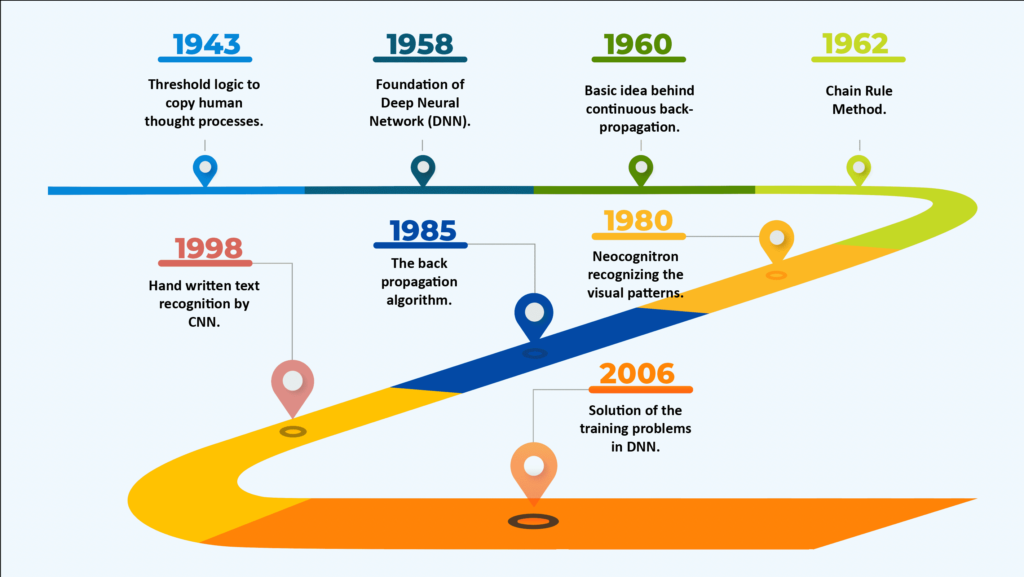
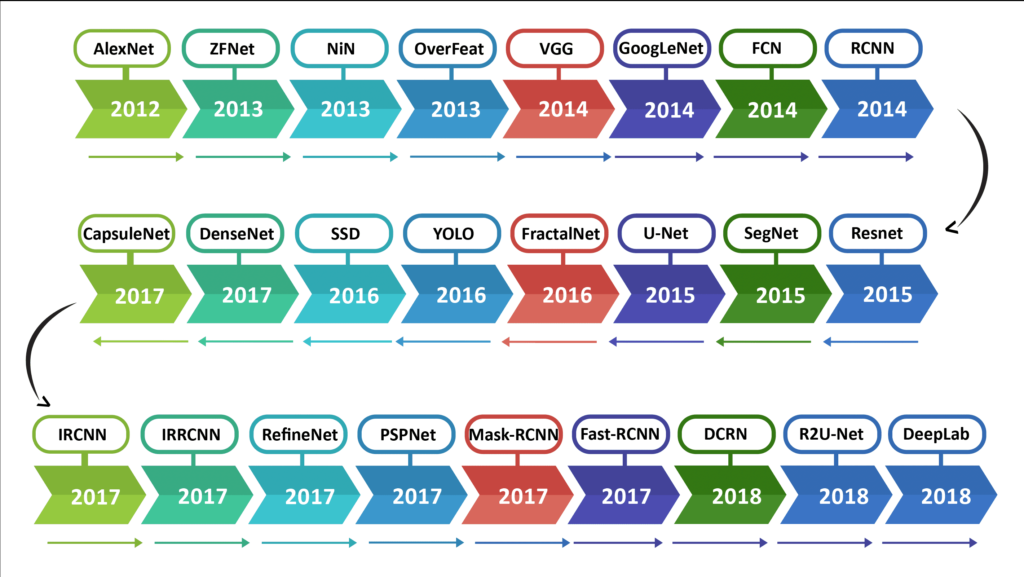
Importance Of Deep Learning
Deep Learning facilitates maximum accuracy and superiority in terms of data handling and management. Technology companies worldwide are increasingly investing in AI-ML Deep Learning technology as it allows maximum trust via supreme accuracy. This further leads to better decision-making abilities across industries. Deep Learning technology makes machines smarter.
For instance, Google ALphaGO defeated Lee Sedol, one of the world’s legendary professional Go players, and it had become the news headline.
Google Search engine immensely uses Deep Learning technology, and in other applications like speech recognition systems, self-driving cars, drones, etc. the very digital technology is impacting across industries with immense digital capabilities leading to garnering maximum business returns.
Also Read:
The post What is Deep Learning appeared first on AI, ML and IoT application development company | Fusion Informatics.
]]>The post The Role of Artificial Intelligence Technology in Healthcare appeared first on AI, ML and IoT application development company | Fusion Informatics.
]]>
Artificial intelligence (AI) intends to simulate human uses. It is producing a standard transfer to health care, powered by developing availability of healthcare data and accelerated development of analytics systems. We view the modern station of AI uses in healthcare and consider its tomorrow. AI can apply to different kinds of healthcare data. Popular AI methods include machine-learning techniques for structured data, such as the traditional patron vector machine and neural interface, and advanced deep learning, as well as natural language processing of unstructured data.
The health sector is ready for many major transformations. From minor treatment to cancer surgery to risk assessment, there are many endless opportunities to implement advanced technology for obtaining more precise and effective changes at an exact division in a patient’s care. Major disease operations that employ AI tools involve cancer, neurology, and cardiology. We then evaluate in numerous details the AI treatments in stroke, in the three major areas of early detection and investigation, operation, as well as outcome prophecy and prediction evaluation.
Artificial Intelligence offers a large number of benefits compared to traditional methods. The main advantage of Artificial Intelligence in Medical is decision-making techniques, which help to take the exact and accurate decision by analyzing reports of patient records, as they cooperate with exercise data, letting humans gain exceptional insights into diagnostics, care procedures, action unpredictability, and patient conclusions.
In the health sector, mainly Artificial Intelligence applied I computer system to execute medical operations and suggest the data for treatments. Artificial Intelligence and machine learning have capable of identifying an exact data set and has widely spread over the entire Industry to obtain its effectiveness. The purpose of this superior concern is to determine the possibility of several intellectual methods abused in medical informatics tools and applications. Proposals for this distinct issue must be a unique work that contracts in some method with topics related to medical artificial intelligence, proficient systems, data excavating, machine learning, and image treating.
How artificial intelligence works in the Health Sector?
Every day in the healthcare industry produces an enormous amount of data of patient’s records and reports. To maintain and manage this large quantity of data Artificial Intelligence is applied. The big data and Internet of Things are strongly approached to maintain recordkeeping in the health care industry. With Artificial Intelligence Development, all of these data managings can be inserted into algorithms for machine learning to predicting analysis report in healthcare.
The computer ability to insert, AI algorithms independently solve many problems with explicit programs in detail. Artificial Intelligence drives computer intelligence by inserting the conceptual structure for processing input and development decisions based on producing data. An Artificial Intelligence program accepts the data and analyzes it.
Let’s consider a patient’s health study, for example. When a doctor is diagnosing a case, they will hold to study at indications, patient records, environmental and hereditary factors to evaluate what directed to sickness. It is not difficult to think that machine and deep learning could treat all of these features and come up with potential diagnoses within moments. Furthermore, since comprehensive data control and records are probable to hold on data, possibly all a doctor has to do is register the patient’s name into a machine. This is just a somewhat generic case of how the abilities of AI can modify health care.
Advantages of Artificial Intelligence in Healthcare
Accurate Decisions– Some patient conditions demand instant action otherwise it will lead to severe. Like this case Artificial Intelligence, the neural network has the ability to look after the emergency condition to treat instantly by analyzing previous cases. After some cases or research on artificial neural networks, researchers assume that it is exactly determined that these systems can diagnose quick & accurate some other conditions include all the emergency health conditions.
More effective diagnosis– Constant, uncomplicated duties such as the study of CT scans and positive tests can be executed more precisely by AI-enabled systems, decreasing physician oversight and allowing early diagnosis and interferences before conditions become severe. The health industry has developed AI algorithms that are both or more reliable than humans when it happens to the immediate detection of conditions such as, for example, coronary aneurysms, brain drains, malignant tissue in breast mammography and osteoporosis.
Virtual Health Assistants – It can proactively treat patients in a number of systems. For one, VHA’s can support dementia sufferers stay on course with their designated medicines by transferring suggestions. Moreover, virtual health aides may give input on strategies for common medical diseases or present procedures for cases with special diet limitations. It can also control patients based on data, enable doctors to engage with victims and medicines to suggest patients of medicine refills and dates, and even promote defensive health screenings.
Reduce Human mistakes: Service of a doctor is very delicate, they have to consider care of all patients. In a day, they can understand many cases, which can be very exhausting because it needs study and observation of the patient. Sometimes due to an absence of activeness, the human mistake may abuse the patient protection. To defeat this AI as an inspector will support doctors by reducing human failure & remove them of tedious & time-consuming tasks.
Cost Reduction: With the emerging technologies, including artificial intelligence, the victim can perceive doctor support without encouraging hospitals/clinics, which appear in cost-cutting. AI assistants present online care & assist victims to add their data more regularly via online medical documents etc.
Advancement in treatments– AI is driving progress in healthcare operations, such as developing the business of medical plans, explaining data to provide helpful treatment methods, and monitoring methods. AI has the intelligence for immediate and more precision recognition symptoms of disease in medical models, like MRI, CT scans, ultrasound, and x-rays, and hence allows quicker diagnostics reducing the time patients wait for a diagnosis from weeks to small hours and stimulating the initiation of treatment options.
Conclusion –
AI is growing technology in diverse areas. AI has the opportunity to have a large and accurate impact on doctors and patients in healthcare. Because of the capability to aggregate and examine a large amount of different data, AI could generate significantly quicker and more precise diagnoses for a wider section of the population. People without access to highly functional health care could obtain the advantage of that expertise through AI. Healthcare costs could probably drop due to advanced and more reliable diagnoses. Artificial Intelligence is well verified, doctors will have to proceed to apply their practice and expertise to confirm that artificial intelligence is allowing the precise diagnoses and the course of the medical procedure.
At Fusion Informatics, We are expertise to help your businesses by providing Artificial Intelligence-based solutions according to your niche market. Fusion Informatics is a leading mobile app development company Dubai provides the best assistance for your concern
The post The Role of Artificial Intelligence Technology in Healthcare appeared first on AI, ML and IoT application development company | Fusion Informatics.
]]>The post How AI Transforms the Future of Trading appeared first on AI, ML and IoT application development company | Fusion Informatics.
]]>
What is an Algorithm?
An Algorithm is a set of instructions (controls) given to an AI program to read and learn on its own to use or respond deliver when specified events happen. These Algorithms connected to generate computer software or applications to perform
Advancement of technology is been providing a huge opportunity for people that were ready to benefit from them. Before decade, buying and selling shares are an inconvenient process and it is available only for a few people. Nowadays, computers and the internet have become more affordable across the world, so there are huge possibilities for every one can buy and sell stocks easily and quickly within simple clicks.
What is Algorithm Trading?
Algorithm trading is a system of trading which provide transactions, decision making in the financial markets using advanced mathematical tools and techniques. It utilizes most advanced programming methods for making decisions and transactions.
The strict rules developed to determine the optimal time to place an order that would cause the least amount of impact on trade price. The large blocks of shares purchased by dividing large shares blocks into smaller blocks by allowing complex algorithms to decide when smaller blocks have to purchase. In this type of system, human interference eliminated and made a decision fast and accurate by the system itself. And even helps to spot the huge possibilities to track the profit in the market.
In the commercial markets, there are almost as many selling and buying stock plans, as there are investors and tradesmen. The exchanges are more accessible electronically; it is creating more possibilities for the growth of trading operations. In this Algorithm trading technology, the computer can decide on your behalf and able to sell and buy stocks. By using advanced high-level alphanumerical models can deliver decisions and actions in the financial exchanges. Many companies are implementing this technology, especially in Investment banks.
Algorithmic Trading Strategies
There many strategies which look safe and constant profits, But algorithmic trading plans may be perfect.it will eliminate human interference and draw in a lot of speed and strength based roll in your costs. The Algo strategies help to identify a large number of changes happen in the market that can benefit from. Here are some Strategies
- Momentum Investing -This strategy is strongly dependent on the drive in the business. It is a positive appeal and a timeless motion and helps to increase the success rate and efficiency. It helps traders in the prospect of market leaning that intimates vital action.
- Statistical Arbitrage: These strategies aim to recognize cost differentials between devices, quoted in various markets or within assets, which distribute known and predictable connections with each other. Arbitrage plans seek to employ mispricing in these tools, be that over or under judgment.
- Performance-Based Strategies-This type of algorithmic trading strategy described to execution-based plans. Institutional investors will employ these types of strategies, they execute when producing large bulk purchases. These types of strategies use different techniques in order to obtain the most solid investment possible.
How it helps for Successful trading strategies
The programmed method of Algo trading has a predefined set of the process applied to buy and sell stocks accurately in a successful manner. The main advantage of Algo trading is a speed and an automated system can develop decisions based on market information received electronically. This decision is performed automatically.
Investors have the additional benefit of the activity with which automatic algorithmic trading applications can make conclusions. When business data collected electronically, trading decisions are performed automatically. With the help of this strategy, arrangements, and procedures started before individual traders even informed the data. This creates part of the great competing edge that boundary stocks and related dealers can have above different investors.
Effective use of AI for algorithmic trading
The Artificial Intelligence (AI) application for trading on digital currency transactions is a popular method that has instantly increased throughout the system. The Advanced Artificial Intelligence is expanding in all the industries. In AI algorithms, neural structures are the foundation for system and services are prepared within that in an easy method. In the machine learning, artificial neural systems create a domestic of learning models, formed akin biotic neural complexes. The Artificial Intelligence impacting Algo Trading in multiple strategies with a combination of machine learning, deep learning, neural networks and linear deteriorations for optimizing algorithms in the system. This is the strategies perform in a part of investment approach.
An algorithm clearly transfers for a set of actions to identify figures in real-time business data to identify buying opportunities. Generally, financial firms would benefit a great number of various traders manually carry out the method of developing trading algorithms. However, with the advanced technologies possible now, it is a much quicker process to develop trading algorithms and put them to apply.
At their core, these are arrangement system is developed that send and receive communications to each other and have alphanumeric balance. This makes neural networks easygoing to participation and adept in learning. Hence, the systems built upon neural links are constantly adjusting to the moving conditions in real time. The advanced Machine learning and AI provide many benefits of traditional Algo systems.
AI performs a real difference in commercial trading by opening relevant data and producing affordable and readily accessible devices that benefit everyone, not just corporate. The purchase conclusions made by AI will be added, reliable and honestly better than made by humans.
Benefits of Artificial Intelligence in the Trading
- Through automation, it helps to accelerate automate effective algorithms for trading strategies
- It helps to monitor and analyze the markets and respond quickly with a huge number of the markets division
- The AI offers the ability to find the associations based historical information for identifying the trends to develop
- The automation of Artificial Intelligence algorithms helps traders to adopt the trend instantly for development.
- It helps to increase the more opportunities in the number of marketers area to perform effectively
- It helps to automate the process based on the others are manually performing
- Through Artificial Intelligence impact of Algo trading, we can achieve competitive advantage
- It helps to benefit changes in trading real-time with other competitors are standing to transform into profits.
Conclusion
An Automated trading algorithms system developed with Artificial Intelligence (AI) has distributed their approach into the commercial world quicker than the marketer expected. AI-driven investment platforms have attracted investors to implement by ensuring them of secure, stable returns. Simply, this made people conclude that AI is the future of trading. Now the world of trading has emerged to leverage technology to build multiple benefits from it. AI can help with data analytics and insights for powerful resources in the area to create alpha and decrease costs. These technologies have developed across the fields of trade strategy operations, and customer commitment.
Fusion Informatics has experience developing algorithmic trading software for hedge stocks, and trading firms. We develop platforms with the largest features fits in the industry including strategy development.
The post How AI Transforms the Future of Trading appeared first on AI, ML and IoT application development company | Fusion Informatics.
]]>The post How AI – Powered Robo advisors make finance efficient? appeared first on AI, ML and IoT application development company | Fusion Informatics.
]]>
Robo-Advisors are digital platforms that provide algorithm fuelled financial advice online with little to no human interaction. This software basically collects data from clients regarding their financial situation and future goals. On the basis of the collected data and with the help of the machine learning algorithm the software automatically allocates, optimizes and manages its clients’ portfolio. The allocation of equity by the robo advisors is generally done on the basis of the client’s risk preferences and desired target return.
The artificial intelligence based robo advisory industry is still a small but extremely fast growing industry. Its powerful algorithms provide low cost wealth management solutions to its users. Without almost any human interference, the robo advisors make apt decisions for the smarter investment and wealth management of the assets. While robo advisors are of great help to inexperienced investors due to its automisation nature but it also is equally helpful to seasoned investors. Using machine learning and deep learning algorithms robo advisors purely make decisions on the basis of the data they are fed and as a result they are on most occasions very accurate and in favour of the client. Robo advisors use a very hands-off approach which is quite popular with people who are not experienced investors. Within this approach the client just has to give his desired amount of money to the robo advisor and using its algorithm and software it invests the money in the best possible way and helps the client grow. Another reason why artificial intelligent robo advisors are very helpful is because they are extremely convenient. One can easily view their account, portfolio and progress online with a mobile app etc. This sort of convenience only comes with digitalization.
In today’s world where everything is digital, robo advisors have arrived and taken the wealth management industry by storm and have brought in its inevitable digitalization. By the looks of it they are here to stay and only going to grow by leaps and bounds.
Need help to know how AI can transform your business?
Please Get in Touch with our AI experts.
The post How AI – Powered Robo advisors make finance efficient? appeared first on AI, ML and IoT application development company | Fusion Informatics.
]]>The post AI: Human Intelligence Simulation, processed by machines appeared first on AI, ML and IoT application development company | Fusion Informatics.
]]>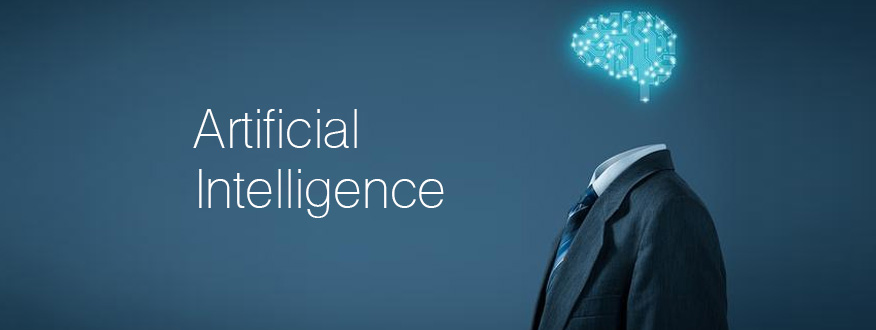
The 21st century can somewhat be pegged as the digital era and one of the most rapidly changing trend in the era was that of Artificial intelligence. Put into simple words, Artificial Intelligence is the science and technology of making computers do things that require intelligence when done by a human. The successful application of artificial intelligence depends on the program’s ability to capture and preserve human expertise. Artificial Intelligence has over the years grown by leaps and bounds and is now used for several day to day functions as well in various sectors such as Finance, Automotive, Healthcare etc.
Artificial Intelligence has currently surpassed the Machine Learning stage where a set of algorithms are used by intelligent systems to learn from experience. AI is currently at the Machine Intelligence stage where it uses more advanced set of algorithms as compared to the previous stage and these are used by machines to process and learn from experience.
Due to Artificial Intelligence the human intelligence is simulated so well that we use AI in our day to day lives and have eliminated the need for human interaction when it comes to those particular tasks. A few such examples are:
Virtual Personal Assistants: These are all intelligent digital personal assistants on various platforms such as iOS, Android and Windows. The machine processes are queries asked by the user and responds within no time with the appropriate answer
Purchase Prediction: Algorithms are used to detect a pattern in customer purchasing and that information is used in various ways such as sending coupons, discounts and suggest items to the concerned customer.
Online Customer Support: Opposed to what one might think, not all online customer support chats have a live person responding. AI comes handy in these cases where a chat support bot sends much more than automated responses to customer queries. It has the ability to extract information from the website itself and present it to the customer.
Smart Home Devices: These machines study the users pattern and then process that data and act accordingly to perform tasks that help the user save money and conserve energy.
The basic simulation of Human intelligence and the apt way that it is being implemented is one of the reasons why AI is now an integral part of our lives. One cant say what the future holds by the sky is the limit when Artificial Intelligence is concerned as it is growing by leaps and bounds everyday with millions of dollars being put into research to make it better.
The post AI: Human Intelligence Simulation, processed by machines appeared first on AI, ML and IoT application development company | Fusion Informatics.
]]>The post Machine Learning: A Constructive Combination of AI, Big Data & Algorithms appeared first on AI, ML and IoT application development company | Fusion Informatics.
]]>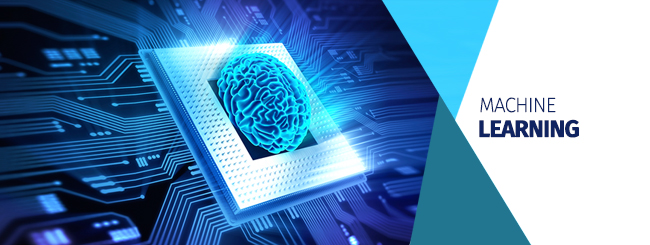
It is no big surprise that machine learning/ artificial intelligence has increasingly gained more popularity in the past couple of years. In the digital era, data is rapidly expanding and so is the need of analyzing and understanding this huge data for making right decisions. Big Data arrives as the hottest trend in the IT sector at the moment; machine learning is an incredibly powerful tool to make predictions or calculated suggestions based on large amounts of data. Most common example of machine learning is ecommerce websites algorithms to make product suggestions based upon the choices made by you as a customer.
What is machine learning? In simple terms, Machine learning is the practice of educating a computer about finding patterns and making connections to understand huge amounts of data. So in order to finish a given task, the machine does not use any programming software and instead of doing that it looks at the Big Data and algorithms to find out patterns for accomplishing it. Machine learning enables applications to look for patterns in the data, think and make wise decisions in the future.
Why Machine Learning is Relevant Today?
Machine Learning solutions are serving to a variety of sectors for optimizing organizational processes such as:
Automotive & Manufacturing: Identifying and navigating roads and obstructions in real-time for autonomous driving, Predicting failure and recommending maintenance on vehicle components, predicting outcomes and minimizing R&D costs, optimizing manufacturing costs are some of the tasks performed by machine learning.
Health-Care: Machine learning helps in diagnosing known diseases from scans, biopsies, audio, and other data. It is also useful in predicting personalized health outcomes to optimize recommended treatments. Machine learning can evaluate doctor’s performance and provide outcome-improving feedback.
Finance: Machine learning is extremely useful in identifying fraudulent activities using customer transactions and other relevant data as well as it is quite helpful in discovering new trends, risks and benefits for predictive analytics.
Telecom: Machine learning can predict lifetime value and risk of churn for individual customers. It is used to allocate the resources, make radical personalization for individual prospects, and forecast demand trends.
Retail and E-Commerce: Machine learning is used for product recommendation, price and product optimization, demand and supply optimization, making customer support a better experience in terms of precision in delivering solutions.
At fusion informatics, our machine learning services deliver solutions that are focused on enabling personalized and engaging customer experiences as well as optimizing organizational processes.
The post Machine Learning: A Constructive Combination of AI, Big Data & Algorithms appeared first on AI, ML and IoT application development company | Fusion Informatics.
]]>